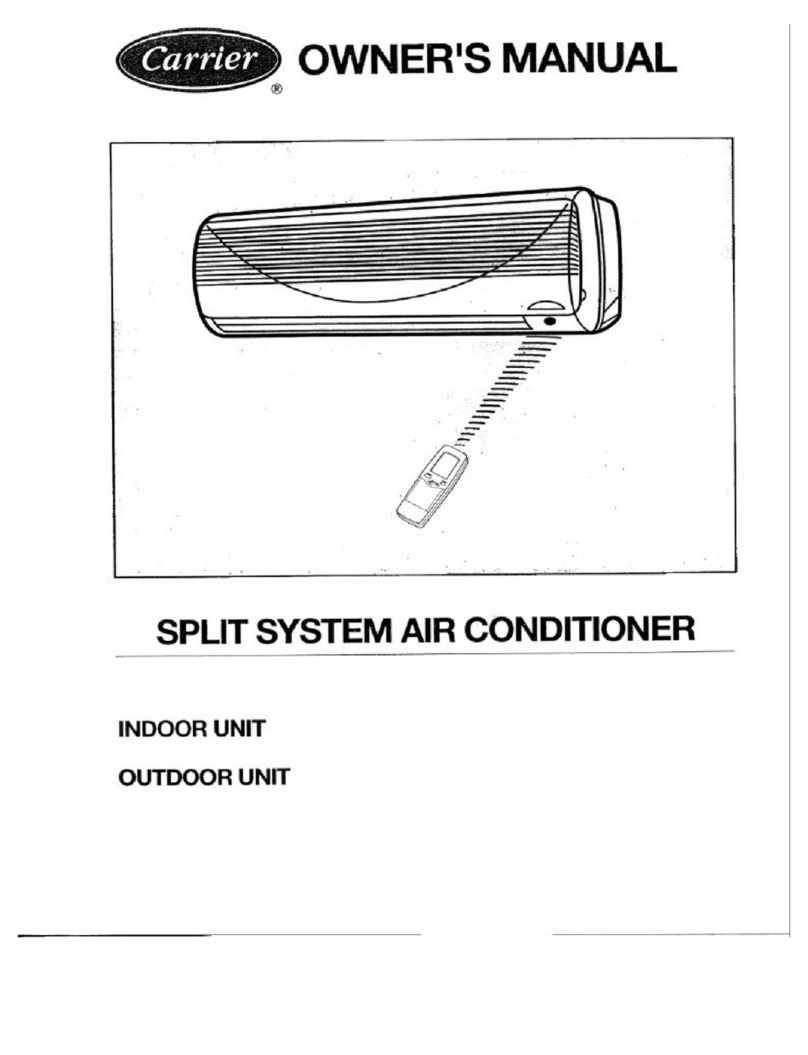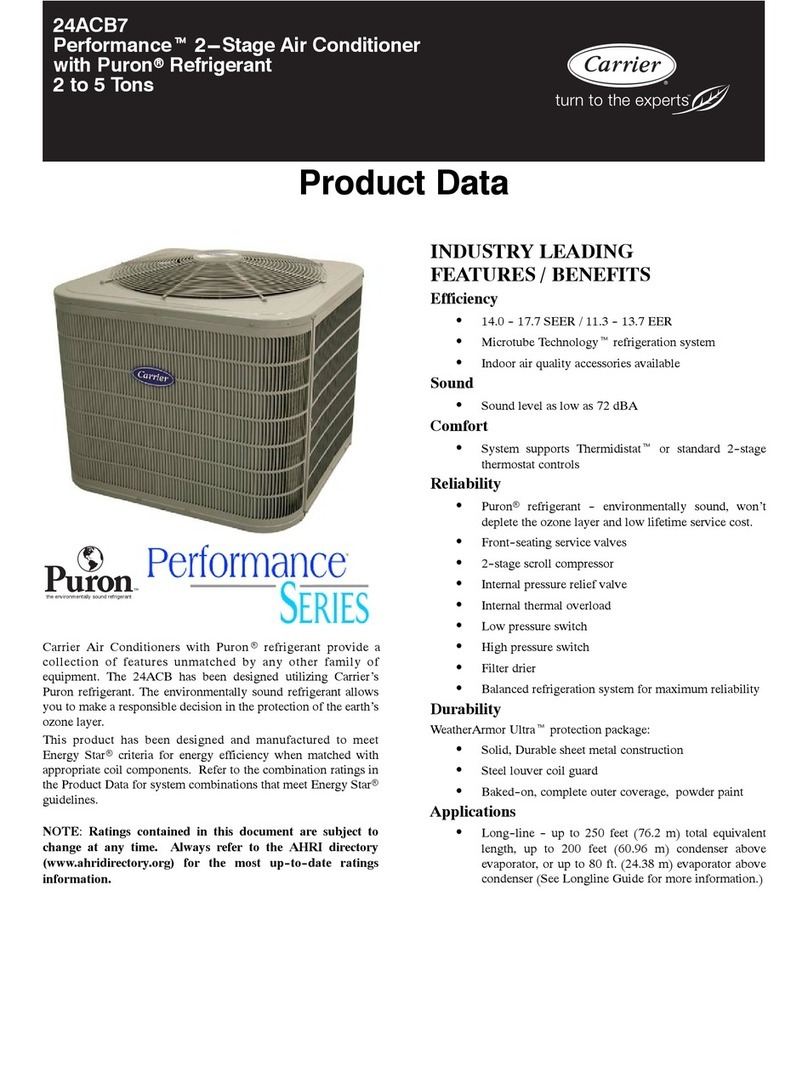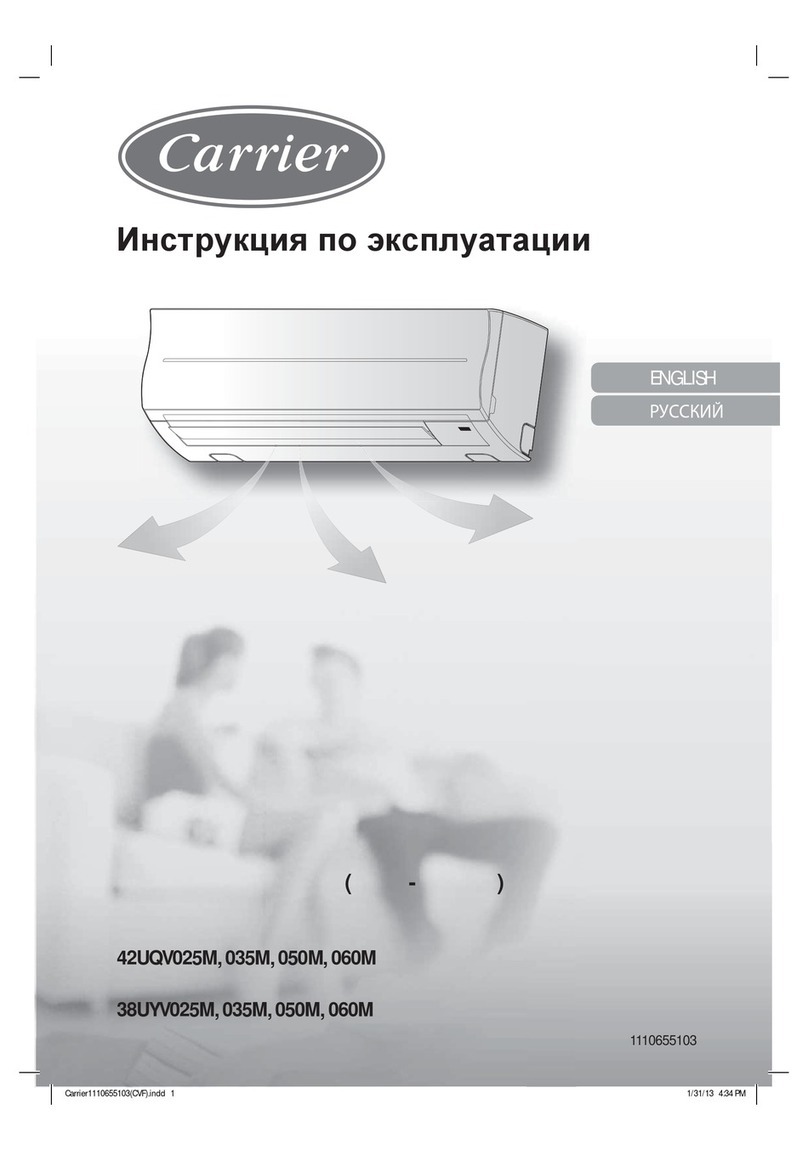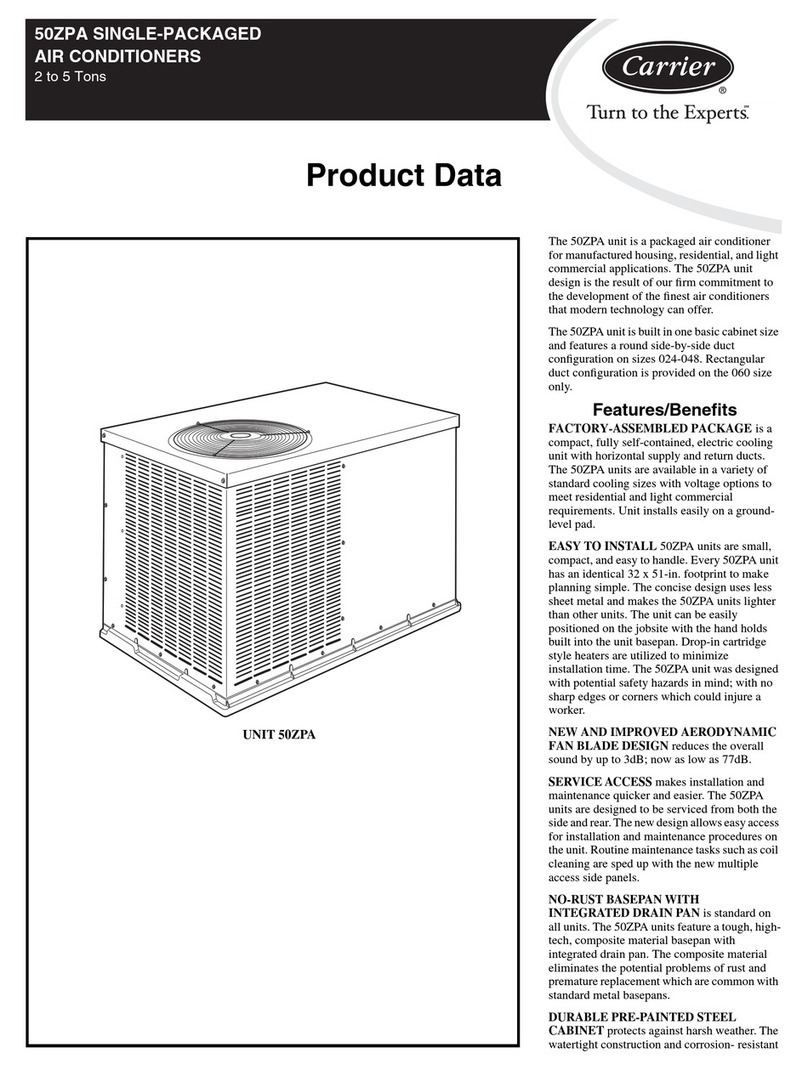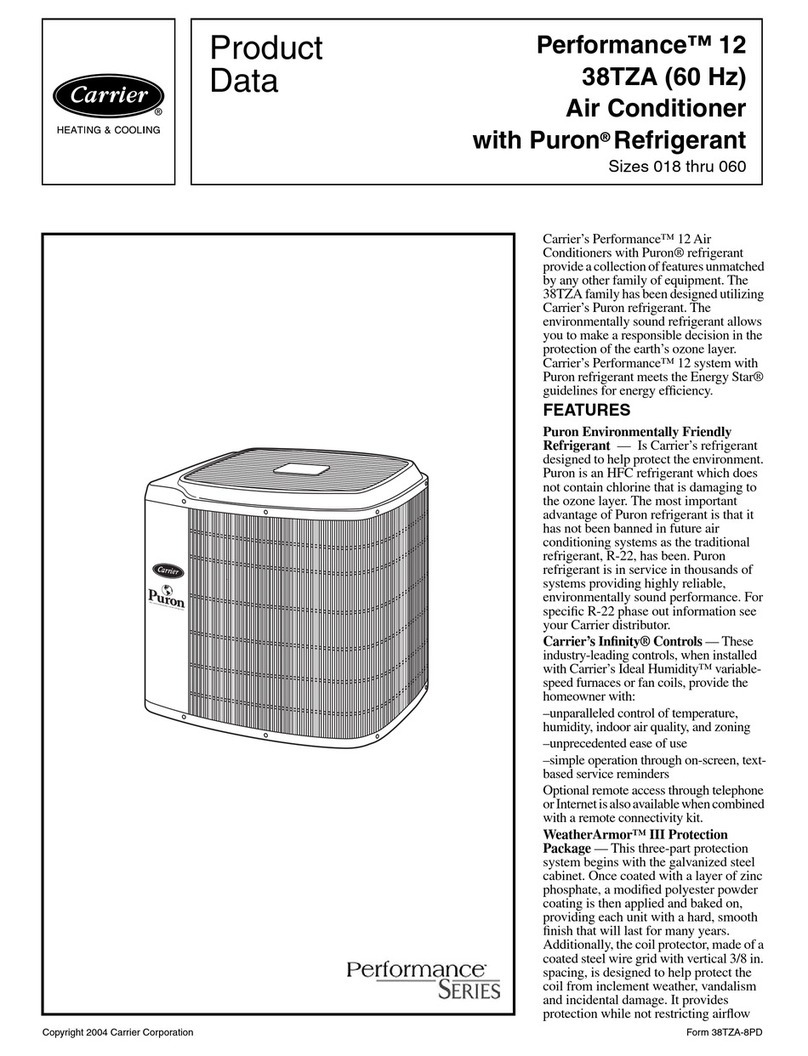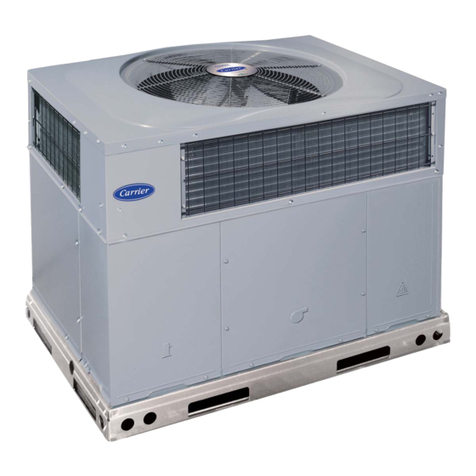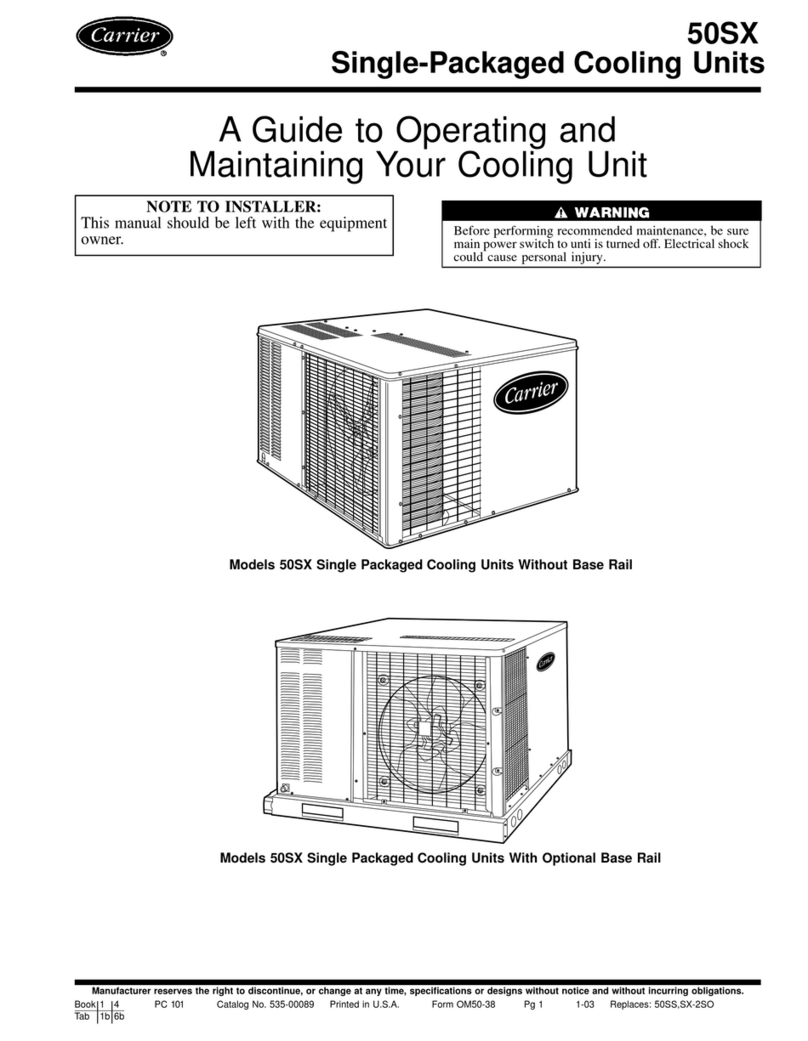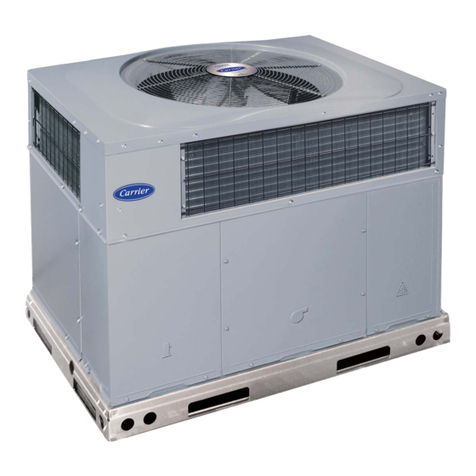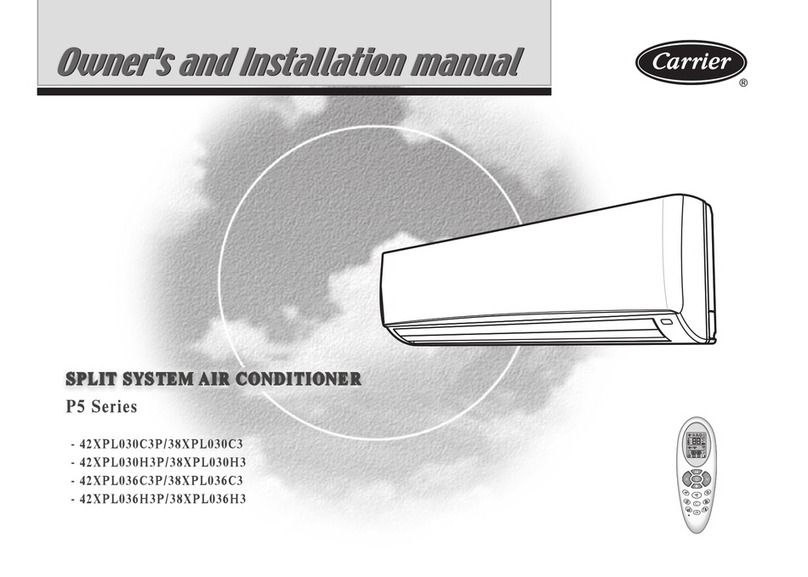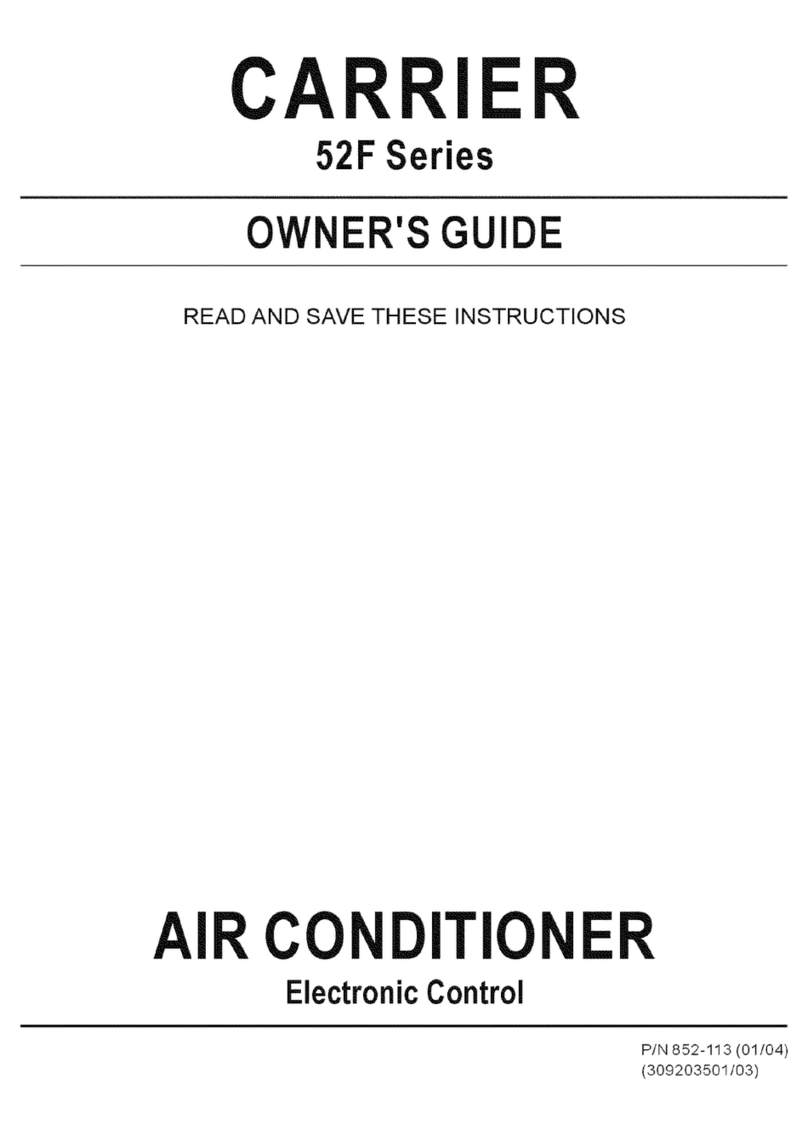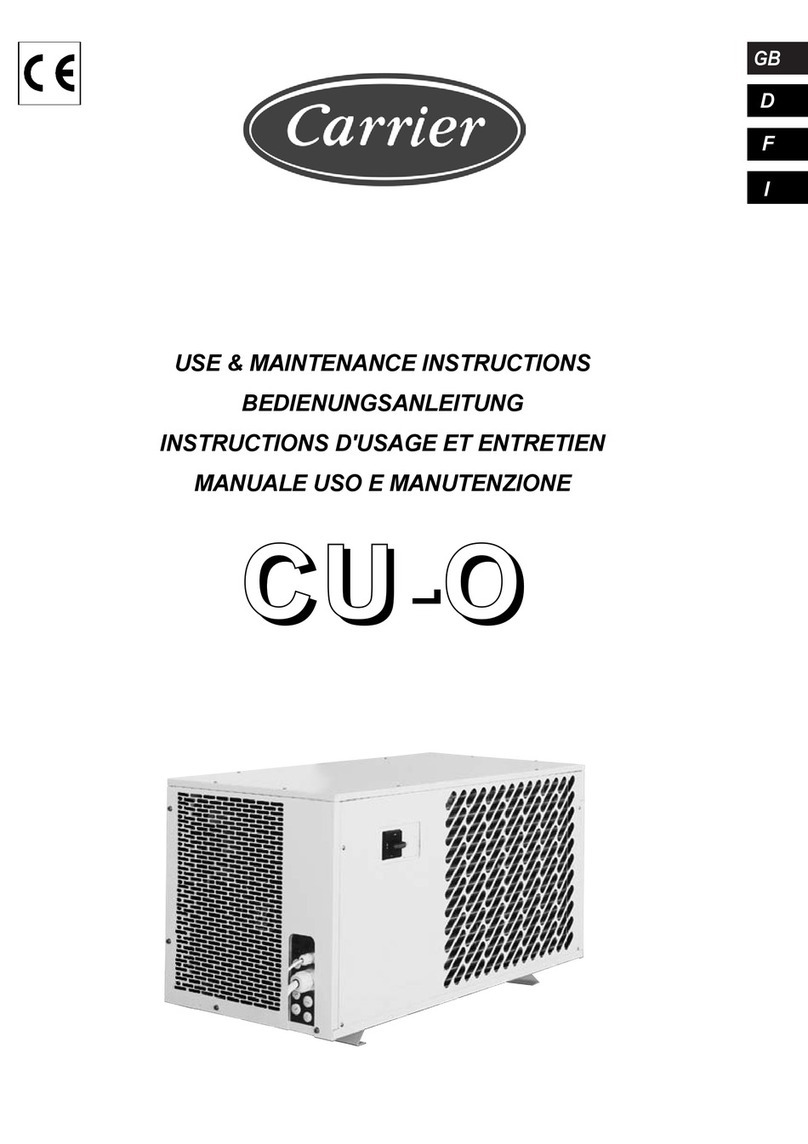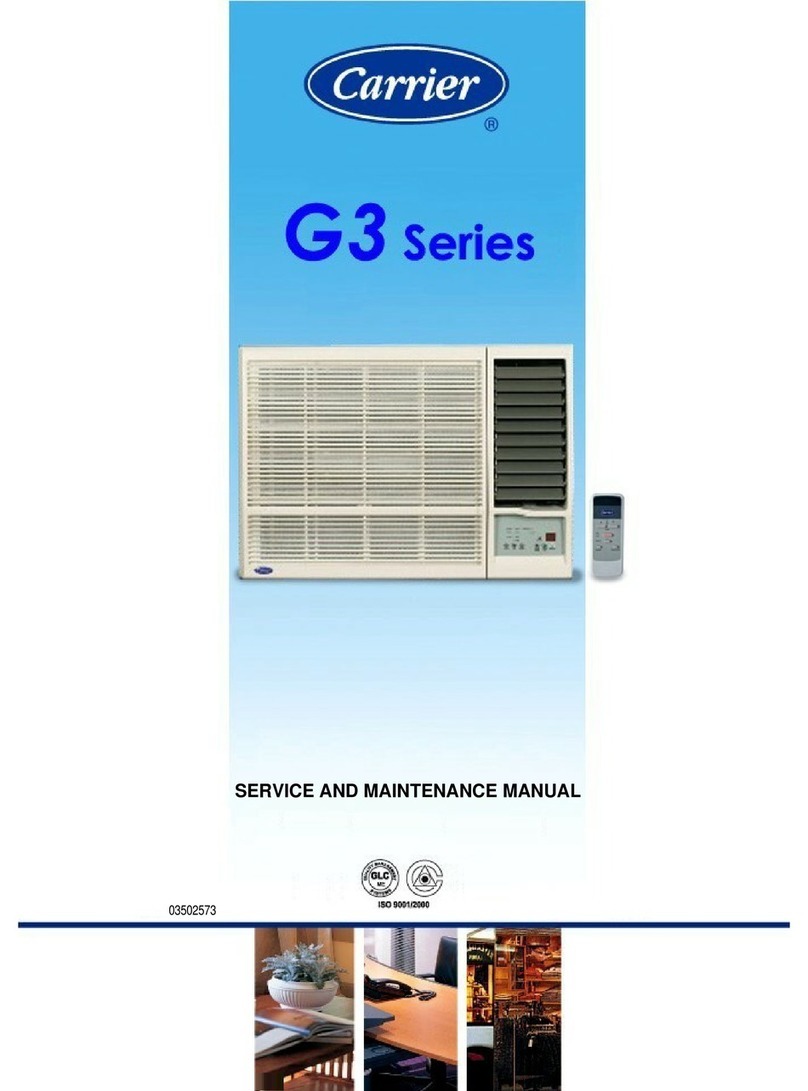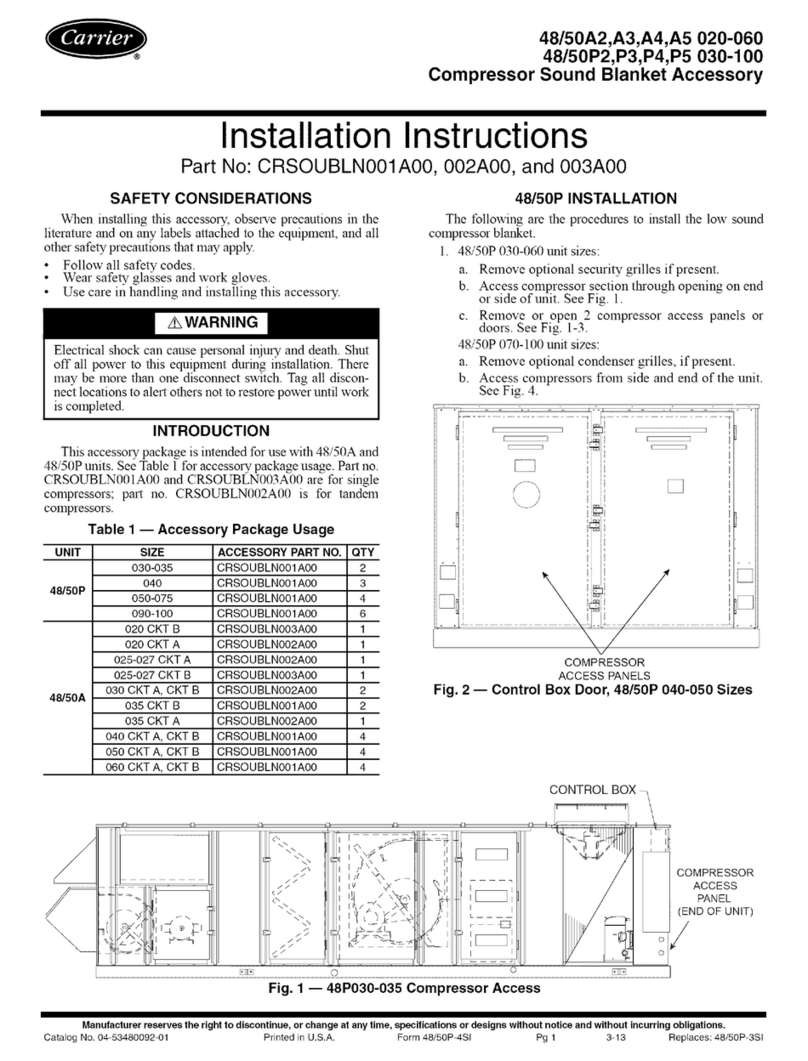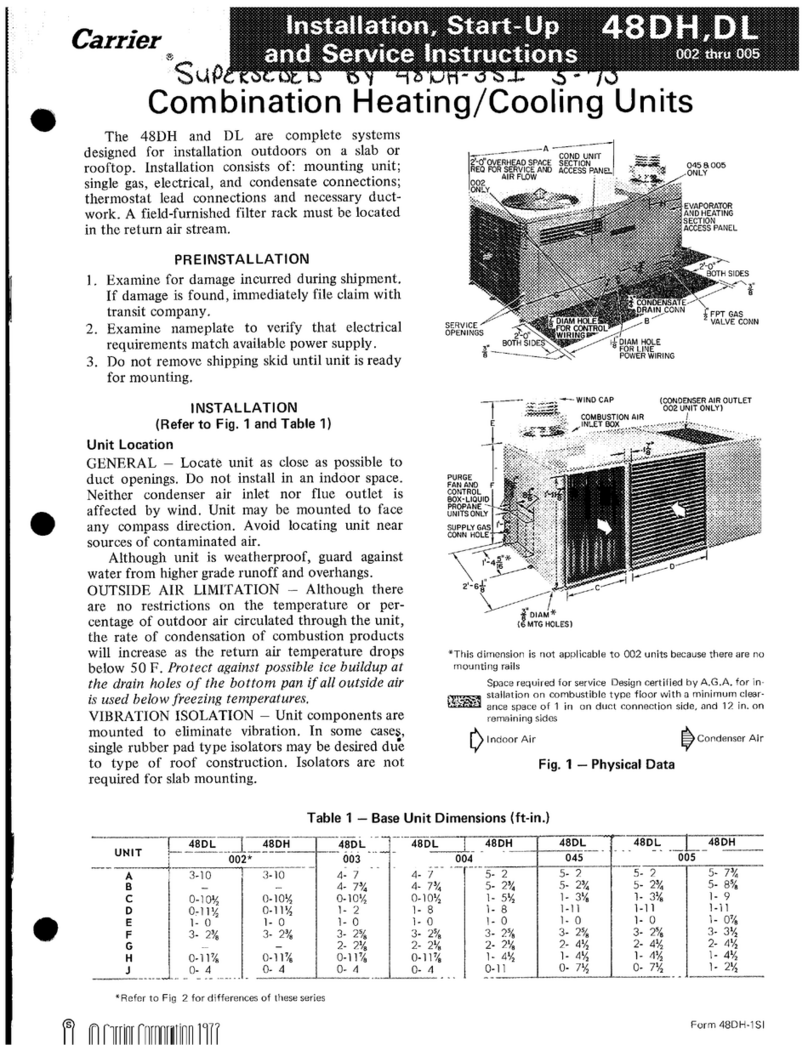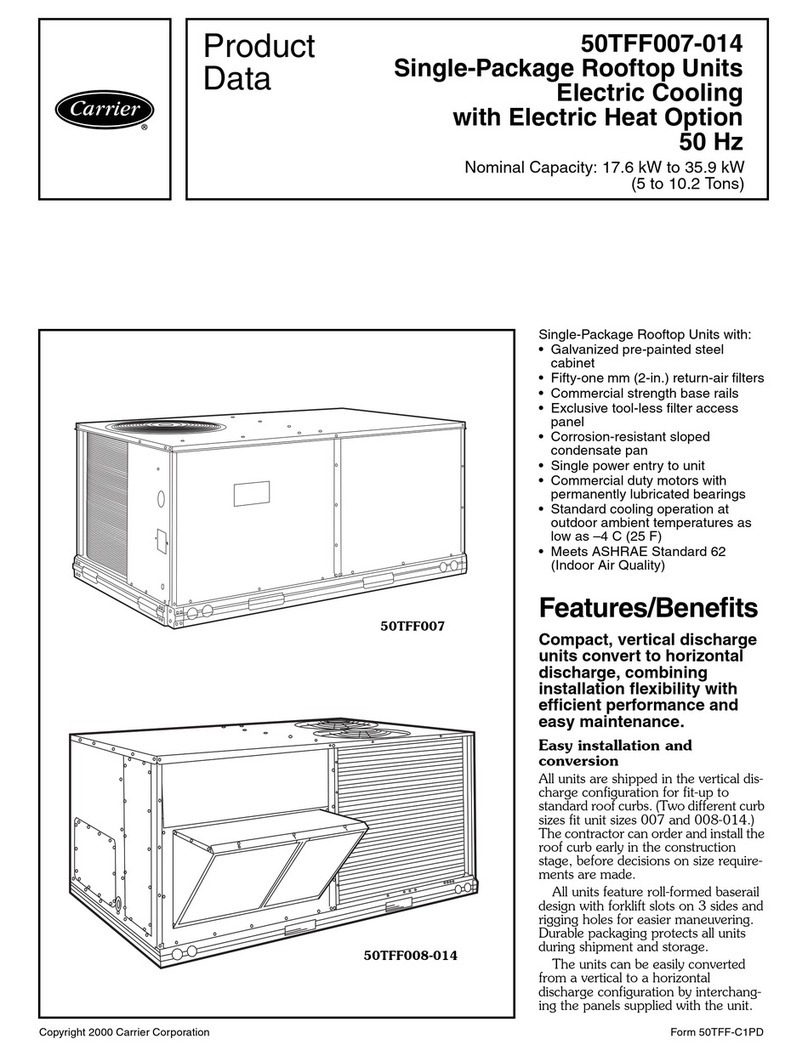8
For 30WGA units with remote condenser the installer must
be clearly note the total refrigerant charge used in the system
(in kg) on the label attached to the 30WGA.
RISK OF EXPLOSION: Never use air or a gas containing
oxygen during leak tests to purge lines or to pressurise a
machine. Pressurised air mixtures or gases containing oxygen
can be the cause of an explosion. Oxygen reacts violently
with oil and grease.
Only use dry nitrogen for leak tests, possibly with an
appropriate tracer gas.
If the recommendations above are not observed, this can
have serious or even fatal consequences and damage the
installation.
Never exceed the specied maximum operating pressures.
Verify the allowable maximum high- and low-side test
pressures by checking the instructions in this manual and
the pressures given on the unit name plate.
Do not unweld or amecut the refrigerant lines or any
refrigerant circuit component until all refrigerant (liquid
and vapour) as well as the oil have been removed from unit.
Traces of vapour should be displaced with dry nitrogen.
Refrigerant in contact with an open ame produces toxic
gases.
The necessary protection equipment must be available, and
appropriate re extinguishers for the system and the
refrigerant type used must be within easy reach.
Do not siphon refrigerant.
The accidental releases of the refrigerant, due to small leaks
or signicant discharges following the rupture of a pipe or
an unexpected release from a safety valve, can cause frostbites
and burns to personnel exposed. Do not ignore such injuries.
Installers, owners and especially service engineers for these
units must:
- Seek medical attention before treating such injuries.
- Have access to a rst-aid kit, especially for treating eye
injuries.
We recommend to apply standard EN 378-3 Annex 3.
Avoid spilling liquid refrigerant on skin or splashing it into
the eyes. Use safety goggles and safety gloves. Wash any
spills from the skin with soap and water. If liquid refrigerant
enters the eyes, immediately and abundantly ush the eyes
with water and consult a doctor.
Never apply an open ame or live steam to a refrigerant
container. Dangerous overpressure can result.If it is necessary
to heat refrigerant, use only warm water.
During refrigerant removal and storage operations follow
applicable regulations. These regulations, permitting
conditioning and recovery of halogenated hydrocarbons
under optimum quality conditions for the products and
optimum safety conditions for people, property and the
environment are described in standard NF E29-795.
Any refrigerant transfer and recovery operations must be
carried out using a transfer unit.3/8” SAE connectors on the
liquid, suction and discharge lines are available for all units
for connection to the transfer station. The units must never
be modied to add refrigerant and oil charging, removal and
purging devices.All these devices are provided with the units.
Please refer to the certied dimensional drawings for the
units.
Do not re-use disposable (non-returnable) cylinders or
attempt to rell them. It is dangerous and illegal. When
cylinders are empty, evacuate the remaining gas pressure,
and move the cylinders to a place designated for their
recovery. Do not incinerate.
Do not attempt to remove refrigerant circuit components
or ttings, while the machine is under pressure or while it
is running. Be sure pressure is at 0 kPa and that the unit
has been shut down and de-energised before removing
components or opening a circuit. If the refrigerant circuit
is open to carry out a repair, all circuit openings must be
plugged, if the repair takes longer than 30 minutes. This
prevents humidity from contaminating the circuit, especially
the oil. If the work is expected to take longer, charge the
circuit with nitrogen.
Do not attempt to repair or recondition any safety devices
when corrosion or build-up of foreign material (rust, dirt,
scale, etc.) is found within the valve body or mechanism. If
necessary, replace the device. Do not install safety valves in
series or backwards.
ATTENTION:No part of the unit must be used as a walk-way,
rack or support. The refrigerant lines can break under the
weight and release refrigerant, causing personal injury.
Do not climb on a machine. Use a platform, or staging to
work at higher levels.
Use mechanical lifting equipment (crane, hoist, winch, etc.)
to lift or move heavy components. For lighter components,
use lifting equipment when there is a risk of slipping or
losing your balance.
Useonly originalreplacement partsforany repairor component
replacement. Consult the list of replacement parts that
corresponds to the specication of the original equipment.
Do not drain water circuits containing industrial brines,
without informing the technical service department at the
installation site or a competent body rst.
Close the entering and leaving water shutoff valves and
purge the unit water circuit,before working on the components
in
stalled on the circuit (screen lter, pump,water ow switch,
etc.).
Periodically inspect all valves, ttings and pipes of the
refrigerant and hydronic circuits to ensure that they do not
show any corrosion or any signs of leaks.
It is recommended to wear ear defenders,when working near
the unit and the unit is in operation.
